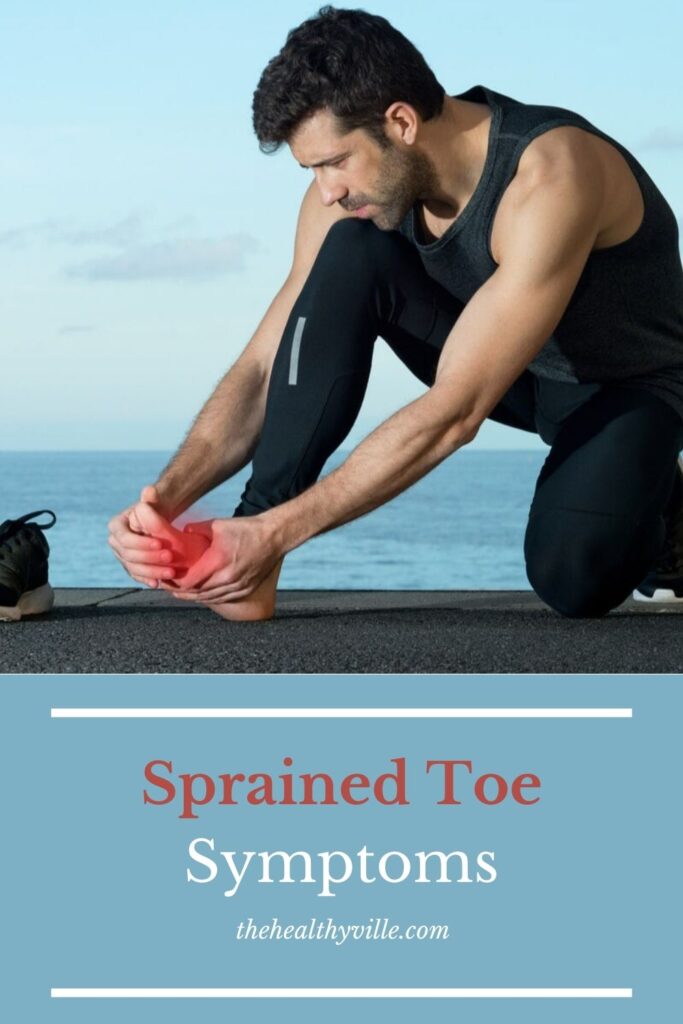Sprained toe symptoms differ, and since it’s an injury to the ligaments, tissues that connect the bones, you need to learn how to treat it.
In this space we will show you the care for a sprained big toe. The surface on which the physical activities are carried out can predispose to pain in that area and to injuries. For example, some forms of artificial turf promote trauma to soccer and football players.
Foot pain is a common reason for consultation in adults. The forefoot is the most common location, including the fingers and nails. Due to its location, it can be quite disabling.
Also, certain activities and occupations pose significant stress. Careful evaluation of the mechanism by which the pain began will suggest one or more causes of the pain.
Joints of the big toe
The foot functions as a rigid platform for posture and to absorb shock that occurs during gait. At the same time, it is a flexible lever that allows push when walking or running.
This lever action that helps the person to overcome their body weight and propel it forward when running or up when jumping, is due to the flexibility that exists between the midfoot and forefoot. As a whole, it is made up of bones joined together through the joints and has ligaments and tendons.
The sprain in the big toe occurs at the base of the foot, that is, the part closest to the body, in a joint called the first metatarsophalangeal. It corresponds to the union of the midfoot and forefoot.
This would be the flexible and highly mobile area that we talked about earlier, where the push lever occurs and, therefore, is a place prone to injury. For its part, the word sprain refers to the injury caused by forced hyperextension of the big toe that leads to a ligament strain.
In English it is called turf toe, which could be translated as turf toes. The name is based on the fact that, as we mentioned, it is common in games on synthetic grass.
Sprained toe symptoms and degrees of injury
Depending on the severity of the injury, there will be some swelling, discoloration, and tenderness around the joint. Passive flexion of the big toe downward and upward extension will be painful. Three degrees have been differentiated in terms of its severity:
- Grade 1: The patient is in pain, but it is not disabling. There may be a small ligament tear (micro tear).
- Grade 2: in this case, the ligament rupture is greater and requires rest. There may be slight instability in the joint.
- Grade 3: here the tear is important, with greater joint instability, so recovery will be longer and will sometimes require surgical treatment. In turn, a hematoma on the surrounding skin and edema can be visualized.
Recommendations for treating sprains of the big toe
Acute treatment for all of these injuries involves icing locally several times a day for 15 minutes. In addition, a supported protection must be incorporated to prevent the extension of the big toe.
The use of an orthopedic boot is an option, as well as the elevation of the foot in order to avoid swelling and the use of anti-inflammatories. This should always be done under medical supervision. On the other hand, crutches may be needed for more serious injuries to rest the foot and facilitate healing.
1st Grade
Generally, for the treatment of the first degree sprain of the big toe, it will be sufficient to carry out the general measures mentioned above. A conservative approach is preferred.
An example of a protective element is the so-called companion bandage, in which the big toe is taped to its neighbor. This will provide stability and prevent flexing.
2nd Grade
It is usually treated in the same way as grade 1. The difference will have to do with the time it will take for the injury to recover. As a general rule, when there is greater damage, the weeks are prolonged until fully recovering the functionality.
3rd Grade
Here the big difference will lie in the need to prolong rest even more and, in some cases of complete ligament rupture, surgical corrections can be made. The surgeries must be accompanied, in the future, by rehabilitation, since they are soft structures that have suffered too much.
Visit to the traumatologist and physiotherapist
The history of the patient with foot pain focuses on identifying the location of the discomfort and any patterns that suggest a particular condition. Although the sprain of the big toe is not a frequent pathology, it should be taken into account, especially in athletes.
With rest and early, conservative treatment, most injuries resolve without sequelae. For this reason, it is suggested to carry out a specialized consultation. You need to avoid the worsening of the injuries and get a speedy recovery.
Don’t forget to SHARE the sprained toe symptoms and how to care about it with your friends and family on your social networks!

